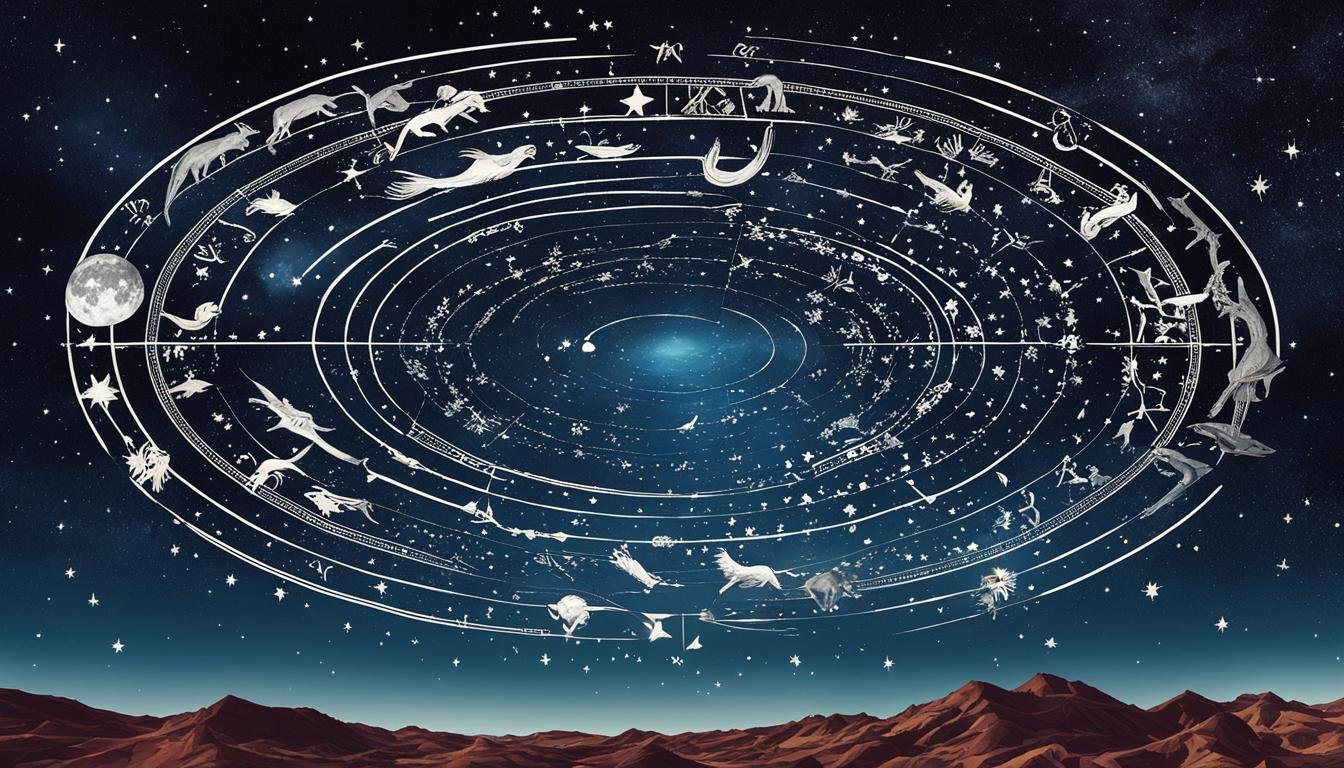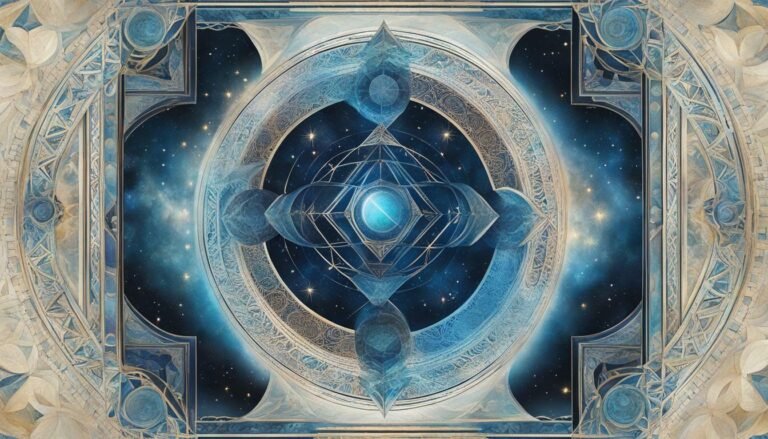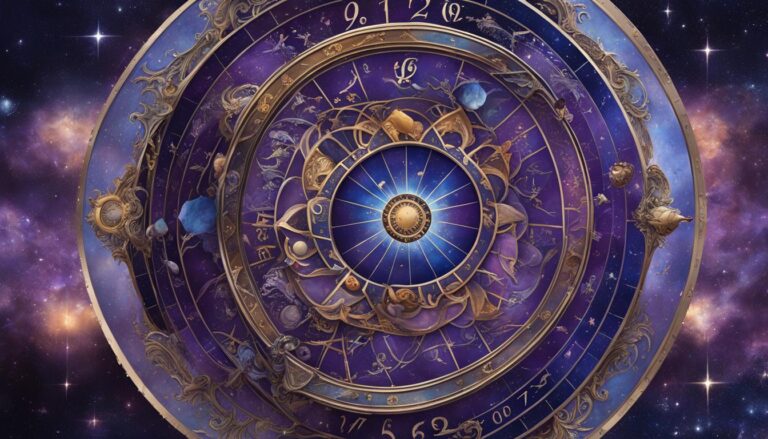What Problem Has Precession Caused For Many Of The Schools Of Astrology?
Have you ever wondered how the ancient art of astrology remains relevant in our modern world, especially when celestial calculations reveal disconcerting discrepancies? The precession problem, a subtle yet significant astronomical phenomenon, has thrown a curveball at many schools of astrology, stirring a debate about astrological accuracy. Imagine looking up at the night sky – the constellations have shifted, yet many astrological systems remain anchored to bygone alignments. This mismatch prompts you to question, how precise are astrological readings when the stars have literally changed their positions?
The very foundations of astrological tradition, the zodiac signs drawn from the celestial sphere, are now a sign away from their original locations. Alignments once believed to shape personality and fate now face scrutiny. As such, it’s crucial for astrologers and enthusiasts to understand how this celestial shift impacts the interpretations and predictions they hold dear.
Key Takeaways
- Precession leads to a shift in zodiacal constellations, impacting the astrological accuracy of traditional zodiac signs.
- Schools of astrology grapple with maintaining the relevancy of their predictions amidst the precession problem.
- Celestial calculations have become crucial for contemporary astrology to uphold its connection to the celestial sphere.
- The one-twelfth zodiacal shift due to precession calls for a reevaluation of astrological methodologies.
- Understanding this astral conundrum is key to appreciating the current challenges faced by modern astrology scholars.
Understanding Astrology’s Ancient Roots
Delve into the captivating history of astrology and discover how ancient cultures paved the way for the astrological predictions you explore today. The practice originally served as a divine compass, guiding civilizations through the whispers of the cosmos. In particular, celestial alignment profoundly influenced the rulings of the Babylonians and Greeks, who meticulously recorded the heavens’ dance, understanding that the stars and planets held sway over human destiny.
From Supernatural Practice to Natal Astrology
Imagine a time when the babble of a celestial dialogue directed the fates of rulers and nations alike. The Babylonians meticulously charted planetary movements, fiercely believing that their alignment dictated earthly events. This grand celestial orchestra performed not only for those of royal blood but eventually for every individual, as Greek astrology later posited, leading to the personalized art of natal astrology.
Astrology and Its Connection with Astronomy
Ancient stargazers didn’t differentiate between astrology and astronomy—the two were interlaced, with the movement of celestial bodies believed to be the deeds of the gods. The astrological framework you may follow today has its foundations laid in the soil of tradition, grown from the seeds sown by Ptolemy’s ‘Tetrabiblos’, and watered by the deep belief in an interconnected universe.
- **Babylonians**: Pioneers who associated planetary patterns with prophecies.
- **Greek astrology**: Democratized celestial insights, offering every individual a cosmic blueprint via their birth chart.
- **Celestial alignment**: Considered as indicators of terrestrial events by ancient cultures.
- **Ptolemy’s ‘Tetrabiblos’**: Systematized the ethereal science, grounding astrological beliefs in structured observation.
In your journey through astrology’s storied past, you discover that today’s astrological landscape is deeply rooted in the rich earth of ancient practices—an inheritance from civilizations that once read the sky’s ever-shifting manuscript.
The Scientific Split: Astrology vs. Astronomy
As you gaze up at the night sky, the ancient practice of astrology might suggest that the stars can foretell your future. However, you’ll find that scientific practice has taken a distinctly different path with astronomy. Let’s delve into how these two disciplines, which once shared a common ground, have parted ways over the centuries.
The Divergence of Two Disciplines
Astronomy evolved with the heliocentric theory and Newtonian physics, transforming into the science obsessed with empirical data and the mechanics of celestial bodies. Astrology, on the other hand, has clung to its mystical roots, offering astrological predictions steeped in tradition rather than empirical evidence. This split illustrates the difference between documented astronomical phenomena and the speculative nature of astrology.
Modern Implications of Ancient Calculations
Celestial calculations have advanced, but the skepticism towards astrology has grown as well. Amidst the progress of scientific practices in astronomy, the predictive power of astrology has been questioned. Studies have repeatedly shown no scientific support for astrological propositions, relegating astrology to the status of a pseudoscience in the eyes of the modern scientific community.
- The rigorous data-driven approach of astronomy focuses on observable and measurable celestial phenomena.
- Astrological practices continue to conjecture fate based on celestial bodies, often ignoring astronomical evidence.
- Celestial calculations reveal the inaccuracies of astrological methods, posing a significant challenge to the validity of its predictions.
While both astrology and astronomy can captivate those intrigued by the cosmos, it’s essential to differentiate the scientific grounding of astronomy from the philosophical and interpretive nature of astrology.
Astrological Predictions Challenged by Precession
If you’re into astrology, you’ve probably heard about the precession problem. It’s like a time-travel issue for the stars, and it’s throwing a cosmic wrench in traditional astrological predictions. The stars are not where they used to be when astrologers first charted the zodiac. Over centuries, due to Earth’s wobbly spin, there’s been a slow shift in the celestial sphere, causing the alignment your favorite horoscope is based on to be a bit… well, off.
This might make you wonder, what’s the big deal with a little celestial realignment? The thing is, with celestial alignment being the bread and butter of astrology, this drift is making some of your horoscope predictions as outdated as the flip phone. We’re talking about an entire sign off in some cases! If you’re feeling skeptical, just think about the fact that, because of zodiacal shifts, the Sun might not actually be in the astrological sign that your horoscope claims it is. And that’s a big deal for anyone trying to read the stars.
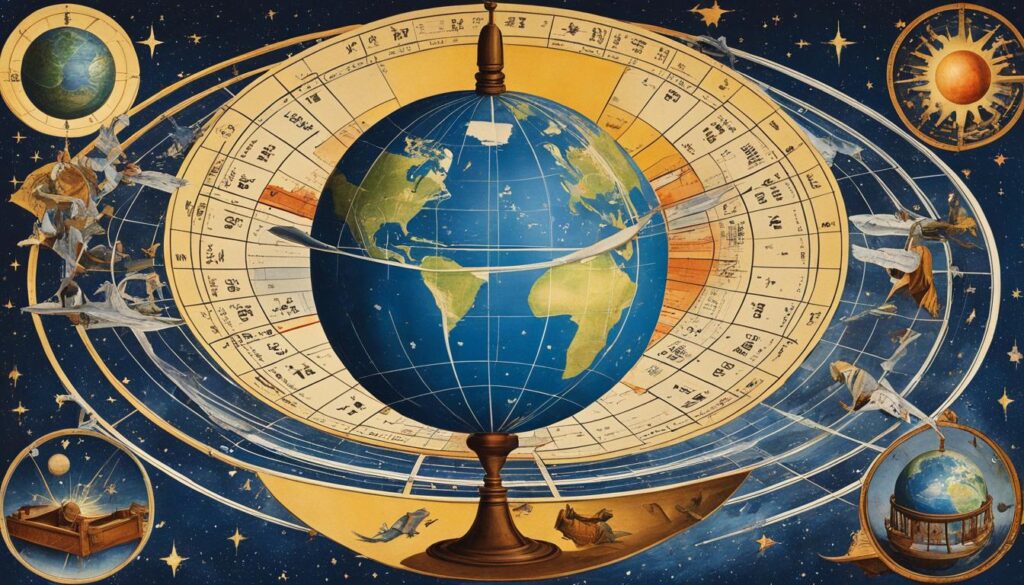
What all this boils down to is the reliability of the horoscopes and star-based guidance you might be turning to. I mean, how can you make those big life decisions or find out if you’re compatible with that cute barista if the stars have secretly moved on to a different part of the celestial dance floor? The reality is, we’re looking at a cosmic game of musical chairs, and the astrology charts haven’t caught up.
So, before you get that zodiac tattoo or make a major move based on where Mercury is chilling, remember that the universe has done a little precession shuffle. Astrologers across the board are grappling with this shake-up, trying to figure out the best way to realign the old-school zodiac with our current map of the sky. Until then, enjoy your horoscopes with a pinch of cosmic salt!
The Mechanics of Precession in the Celestial Sphere
As you gaze up at the night sky, the celestial sphere seems a fixed canopy of stars. However, this stellar vault is in a state of slow but constant flux due to a phenomenon known as precession. The gravitational forces from the Sun and the Moon acting upon Earth’s equatorial bulge result in the rotational axis of our planet to wobble. This wobble may appear subtle, but over long periods, it dramatically alters the zodiacal alignment in the sky.
The Wobble That Changes Zodiacal Alignments
The precession is much like a spinning top, gradually changing the direction of its axis as time progresses. Imagine the Earth’s axis tracing an invisible circle among the stars; this motion causes the zodiacal constellations to shift over centuries. It’s a slow dance of celestial mechanics that affects what you see in the heavens each night.
Time Span and Degree Shift: Measuring Precession’s Impact
At first glance, the impact of precession may seem negligible, with constellations shifting by approximately one degree every 72 years. However, when you extend this calculation over the full precessional cycle of roughly 25,800 years, the totality of the shift becomes quite profound. In an astronomical lifetime, the positions of constellations at particular times of the year can change entirely, causing the original astrological zodiac to become unrecognizable. This astronomical phenomenon reminds us that while the cosmos may seem eternal and unchanging, it is, in truth, dynamic and ever-evolving.
Zodiacal Shifts and Their Impact on Astrological Accuracy
As you delve into the world of astrology, it’s crucial to understand the significance of zodiacal shifts and their undeniable influence on astrological accuracy. These celestial calculations have real implications for how we interpret our astrological charts. The precession of the equinoxes is not just a complex term but a fundamental celestial phenomenon that shifts the astrological tapestry.
The Detachment of Signs from Constellations
One might compare the steady precession-induced drift of zodiacal constellations to a clock’s hour hand slowly sweeping across its face, subtly but surely altering the frames of reference over time. Imagine celebrating your birthday every year only to find out that, astrologically speaking, you might have been blowing candles under a different star sign’s influence. This detachment presents a remarkable challenge to the very bedrock of astrology’s accuracy.
Consequences for Schools of Astrology
For the venerable schools of astrology that have long depended on static zodiacal alignments, these shifts are not merely academic. They call for a reevaluation of centuries-old practices and the potential recalibration of their guidance systems. The ongoing zodiacal shifts beckon a crossroads—whether to adhere to tradition or to adapt and recalibrate, ensuring their celestial compasses point true north.
- Examination of traditional zodiacal frameworks
- Assessment of the precession’s impact on astrological readings
- Exploration of new methodologies to improve astrology accuracy
As practitioners and enthusiasts alike weigh these implications, the pursuit of clarity and precision in astrology continues. The celestial sphere may be in constant motion, but so too is the endeavor to align our understanding with the stars.
What Problem Has Precession Caused For Many Of The Schools Of Astrology?
If you’re delving into astrology, you may have heard about the precession problem and wondered how it affects astrological accuracy. Understanding the nuances of this issue reveals why many schools of astrology are currently facing a predicament. Precession – simply put – is the slow wobble of the Earth’s axis, which causes zodiacal shifts over millennia, leading the zodiac signs to drift from their corresponding constellations. This drift has sparked intense debates within the astrological community.
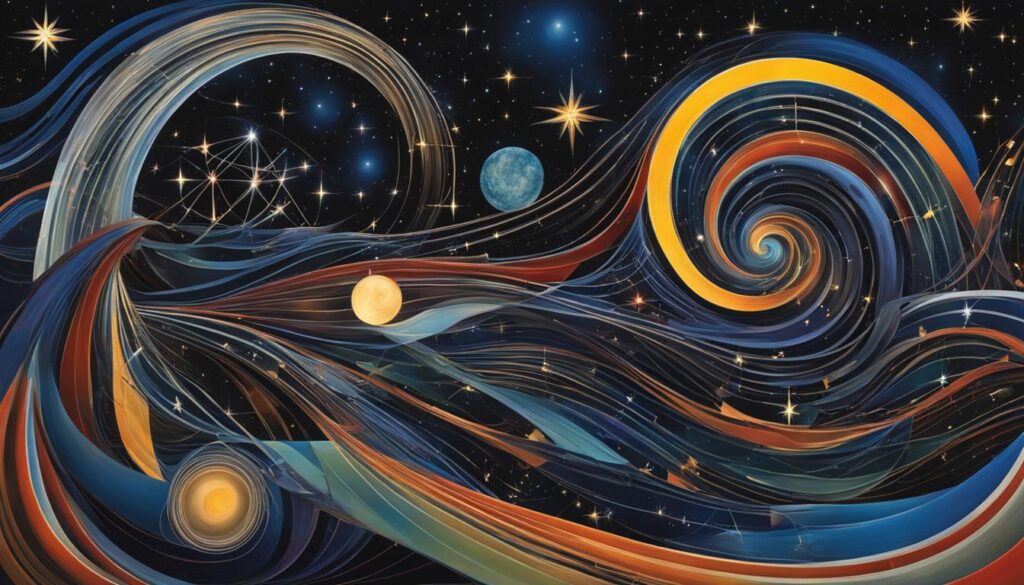
Imagine looking up at the night sky and finding that the constellations are no longer where you expect them to be. That’s what precession does to astrology. For practitioners, ensuring astrological accuracy in their readings is paramount, but precession undermines this precision. The phenomenon causes a disconnect that can’t be ignored; it’s not just about celestial aesthetics – it shakes the very foundation of astrological tradition and practice.
How do astrologers respond? Some adhere to the view that the energetic qualities of the signs are not rigidly bound to the physical constellations and thus remain unaffected by these celestial changes. Yet, others in the astrological community are calling for reform, a move that acknowledges these zodiacal shifts and adapts techniques accordingly.
- Evaluation of ancient practices in light of contemporary celestial configurations.
- Dialogues on whether and how to adjust astrological charts to account for precession.
- Consideration of new methods that incorporate these astronomical shifts.
The questions raised go to the core of what astrology aims to be: a system that connects human experiences with celestial movements. As you explore this ancient practice, you’ll find that understanding the precession problem is essential in discerning the validity and relevance of astrological interpretations offered by various schools of astrology today. Whether these traditions will adapt to incorporate zodiacal shifts remains a compelling storyline in the ongoing narrative of astrology’s evolution.
How Astrologers Address the Precession Problem
As you delve deeper into the realm of astrology, you may encounter the precession problem—a phenomenon causing the shifting of celestial bodies that influences your horoscope. Astrologers take this issue seriously as it affects the astrological precision of their readings, and over time, they have developed methods to recalibrate and adjust the zodiac signs to better align with celestial movements.
Adjusting the Zodiac for Astrological Precision
Astrological systems have been refined to incorporate the shifting caused by precession. Some practitioners add a ‘thirteenth sign’ to account for the movement, while others modify the dates each zodiac sign governs. These ongoing efforts ensure your horoscope remains as precise as possible.
- Examining ancient star charts and recent astronomical data to define accurate zodiacal boundaries.
- Methodically calculating the degree shifts caused by precession over centuries.
- Updating astrological software to include these precessional changes automatically.
Adapting these calculations assures that the celestial alignment of your sign still represents you.
Dealing with Changing Celestial Alignments
The evolving celestial alignments demand an agile approach from contemporary astrologers. Adjusting ancient principles to modern celestial placements bridges the gap between tradition and the present astronomical positioning.
- Dynamic alignment charts are created, reflecting current astrological positions.
- Realignment of zodiac dates ensures each astrological sign corresponds with its celestial counterpart.
- Education in the astrology community spreads awareness of the need for these adjustments.
This proactive stance towards adjustment maintains the relevance and integrity of astrological practices amid the precession problem.
Understanding and adjusting for the precession problem marks a significant step toward astrological precision. While challenging, these adaptations showcase the resilience and adaptability of astrology, ensuring that the celestial wisdom you seek continues to be enlightening and reflective of the true state of the cosmos.
Retrospective: The Retrograde Motion and Astrological Interpretations
While you navigate the intricate world of astrology, retrograde motion emerges as a compelling chapter with its own unique lore and significance. Unlike the slowly unfolding saga of precession with its decaying dance, retrograde motion strikes as a more immediate celestial event, prompting both consternation and introspection among astrology enthusiasts.
Analyzing Retrograde Motion’s Place in Astrological Traditions
Throughout astrological traditions, retrograde motion has been viewed not as a matter for quiet alarm but as an opportunity for a deeper understanding. When a planet appears to reverse its path across the night sky, it invites you to pause and reflect on areas of life associated with its energies. In many astrological interpretations, retrograde motion is considered a period to reassess, review, and realign personal goals and relationships, echoing the planet’s symbolic backtracking.
Interpreting Celestial Events in a Modernized Framework
Modern astrology incorporates retrograde motion into its fabric with a nod to astrological traditions while remaining versatile within today’s context. The approach forms part of a dynamic, updated framework that seeks relevance through historical observation. Such celestial events as retrograde motion, despite the reflective challenge they pose, are embraced within contemporary astrological practice and continue to inform interpretations that resonate with our life’s rhythms.
- Retrograde motion prompts re-evaluation and contemplation
- Retains importance as a guide in contemporary astrological practice
- Ushers a period of potential growth and personal development
So whenever planets begin their retrograde waltz across the cosmos, remember that you’re witnessing an age-old dance of reflection that has intrigued countless generations, all seeking to understand the intricate tie between celestial movements and the human experience.
Conclusion
The intricate dance between the positions of celestial bodies and the interpretations drawn from them has long been the bedrock of astrology. Yet, the phenomenon of precession presents a compelling challenge that raises pertinent questions about astrology’s accuracy. As we continue to unfold the layers of the universe, integrating astronomy findings into the esoteric realm of astrology could bridge the widening gap between these ancient practices and modern celestial calculations.
Embracing Astronomy’s Findings in Astrology
The evolution of astrological methods, in the light of precise astronomical data, holds the promise of refining the accuracy of astrological predictions. By acknowledging the shifts caused by precession, you, as an astrologer or astrology enthusiast, are on the cusp of ushering in a revolutionary era where tradition and scientific insight coalesce. This fusion not only stands to benefit the individual seeking guidance but also revitalizes the practice, offering it a veneer of validation in a world increasingly governed by empirical evidence.
The Future of Astrology in Light of Celestial Calculations
Considering the future of astrology, the path lies in constructing a system that not only respects its heritage but also keeps pace with an expanding cosmic perspective. The challenge of precession demands a reevaluation of astrological principles and the potential to establish a framework that retains the philosophical essence of astrology while enhancing its alignment with celestial truth. For astrology to thrive and maintain its cultural significance, it must evolve with the celestial calculations that define our understanding of the cosmos.
FAQ
What problem has precession caused for many of the schools of astrology?
The **precession problem** has created a significant challenge for many **schools of astrology** because it has led to a misalignment between the traditional astrological signs and the actual positions of the zodiacal constellations in the sky. Over time, this has caused a whole sign’s shift, undermining **astrological accuracy** and the foundation upon which celestial calculations for astrological predictions are based.
How did astrology begin and evolve into natal astrology?
Astrology began with ancient cultures such as the **Babylonians**, who used planetary positions to advise rulers. Over time, **Greek astrology** democratized these concepts, ultimately leading to the creation of natal astrology, which posits that the positions of celestial bodies at the time of one’s birth can affect their personality and future.
What was the relationship between astrology and astronomy in ancient times?
In ancient times, astrology and astronomy were closely linked, with celestial events and positions thought to be the work of deities. This connection meant that observations of the sky were both a **supernatural practice** and the basis for **astrological predictions**, with a focus on significant **celestial alignment**.
How have astrology and astronomy diverged in modern times?
Astrology and astronomy have significantly diverged, especially since the acceptance of heliocentric theory and the development of empirical science. Astronomy became a data-driven discipline focused on objective celestial phenomena, while astrology, without empirical evidence to support its mechanisms, is seen as a pseudoscience and has remained a practice for forecasting personal destiny.
How does precession challenge the validity of astrological predictions?
Precession challenges the validity of **astrological predictions** because the **celestial alignment** and the position of the sun during the zodiacal seasons no longer match the astrological signs historically linked to those periods. This means traditional horoscopes and personality analyses might be based on outdated information due to the **zodiacal shifts**.
What are the mechanics behind the precession affecting zodiacal alignments?
The mechanics involve a gradual ‘wobble’ of Earth’s rotational axis caused by gravitational forces, particularly from the Sun and Moon. This wobble alters the celestial sphere and causes **zodiacal alignment** changes over a period of about 25,800 years, affecting the backdrop against which astrology is practiced.
How do zodiacal shifts impact astrological accuracy?
**Zodiacal shifts** have led to a detachment of signs from their corresponding constellations, which diminishes **astrological accuracy**. As the skies change, so does the frame of reference for astrological interpretations, which can lead to potential inaccuracies within astrological predictions and practices without necessary adjustments to the celestial calculations.
How are some astrologers adapting their practices to address the precession problem?
To address the **precession problem**, some astrologers are recalibrating their zodiac systems, altering **celestial calculations** for **astrological precision**. This process includes adjusting the zodiac signs to better align with the constellations as they actually appear in the sky due to precession.
What is retrograde motion and how is it traditionally interpreted in astrology?
**Retrograde motion** refers to the apparent backward motion of a planet across the sky from our perspective on Earth. In **astrological traditions**, this is typically seen as a period of reflection, reassessment, or potential disruption, and remains a significant factor in modern astrological interpretations despite the challenges posed by precession.
Why is it important for astrology to integrate findings from astronomy?
Integrating findings from astronomy into astrology is vital for ensuring **astrological accuracy**. It enables astrologers to make predictions and interpretations based on current, accurate **celestial calculations**. This can help modernize and potentially validate astrology in a time when astronomical and scientific knowledge is far more advanced than it was when astrology was first conceived.

